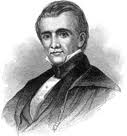History of EaglevilleIn 1849, James Polk was president of the United States soon to be replaced by Zachary Taylor. The Eagleville area with its bustling mill, post office, stores and marshland was the metropolis of the township. Then the time came to add a school to the community.
The task of building a school would take ten years. Many people of the community had conflicting opinions as to whether this school should be built below the big hill or at the top of the hill. From 1849 until 1859, the children attended classes at a home rented by Mr. Andrew Scholfield. In 1859, a 24x30x12 foot high framed building went up on land donated by the Bovee family. Another ten years passed. By 1869, the school needed repairs and the building was moved to a site below the hill where Eagleville Elementary Charter School stands today.
Theodore Sprague was the first instructor during the winter term of 1869-70. He named Maggie Partridge his best student during that term. She later became a much beloved teacher at Eagleville and taught for many years as a new century dawned.
Eagleville Elementary was the site of many interesting activities back in the early years. Winter debates were held in the evenings and drew large crowds. Topics included whether a horse was more useful than a cow and the merits of city living versus country living. Oyster suppers were held a the school with the oysters cooked in a wash boiler on the school stove. Children would sometimes pile into a bob sleigh driven by a team of horses and visit neighboring schools.
By 1931, it was time to tear down the old building and construct a new school. Then, a $25,000 addition was built in 1949 to celebrate the 100th anniversary of Eagleville Elementary. In 1960, another addition was built on the east side of the building.
Our retired third grade teacher, Mrs. Lois Dewey, attended Eagleville as a child. At that time it housed grades 1-8. Her mother, Mrs. McGrath, taught first and second grades at Eagleville for many years.
Mrs. Dewey recalls, "During the winter months we brought our sleds or skis to use at recess time. We went sledding down the hill north of the school. There was even a merry-go-round on the playground." When Mrs. Dewey graduated from Eagleville Elementary, there were only eight other eighth graders.
The Eagleville Alumni Association formed in 1929. The association met for many decades and enjoyed yearly reunions held a Wambold Park. Alumni would gather and compare stories on who had done the most daring escapade during their school days.
Today, Eagleville Elementary retains its country school charm as students enjoy the beauty of the nearby lake now known as Eagle Spring Lake and explore neighboring Jericho Creek.
Today students continue a tradition that has taken place for decades at Eagleville Elementary. Every first day of school, each kindergarten student rings the school bell - a bell that has been part of the school since its beginning. The last day of school every year, each sixth grade student rings their bell to celebrate their educational journey through the school.
Forming a Charter |
| In August of 2003, a team of Eagleville Elementary parents and staff submitted a proposal to the Mukwonago Area School District and the State of Wisconsin Department of Public Instruction. The proposal was for the planning of Eagleville Elementary Charter School, a school that would take the qualities of Eagleville Elementary (small size, family-like atmosphere, strong parental involvement, and support) and put focused attention on our school’s natural surroundings. In November 2003, we received a favorable decision from the state and Eagleville Elementary began the conversion to a charter school for the 2004/05 school year. Eagleville Elementary Charter School is a public school of choice.
What are Charter Schools?Charter schools are independent public schools designed by educators, parents, community leaders, educational entrepreneurs and others who are interested in providing a quality education to children in their community. Charters operate outside the educational bureaucracy that too often stifles innovation in traditional public schools. They cannot charge tuition and they many not "pick and choose" their students. Charters do have similar attributes to private schools, such as the autonomy and accountability that have allowed most private institutions to provide excellent education to their customers.
Do Charter Schools Work?
|

James Polk
How do Charter Schools Operate?
Charter schools operate from 3 basic principles:
Accountability: Charter schools are held accountable for how well they educate children in a safe and responsible environment, not for compliance with district and state regulations. In exchange for freedom from these regulations, charter operators promise to fulfill a set of academic and operational goals laid out in their charter and how well they manage the fiscal and operational responsibilities entrusted to them.
Choice: Almost anyone interested in creating a better educational opportunity for children can start a charter school. Parents, teachers, community groups, and organizations have already started charter schools in many communities across the U.S. Charters can be focused on a specialized curriculum, like the Arts, or they may serve special student populations, such as at-risk students. Some schools use progressive educational approaches and others use more back-to-basic approaches. Charter schools are sponsored by entities that want to foster innovation and excellence in schools: state and local school boards, and colleges and universities. Students choose to attend, and teachers choose to each at charter schools.
Autonomy: Charter schools are autonomous. They are freed from the traditional bureaucracy and regulations that divert the energy of most traditional public schools.
(Source - The Center for Education Reform)
(Source - The Center for Education Reform)
